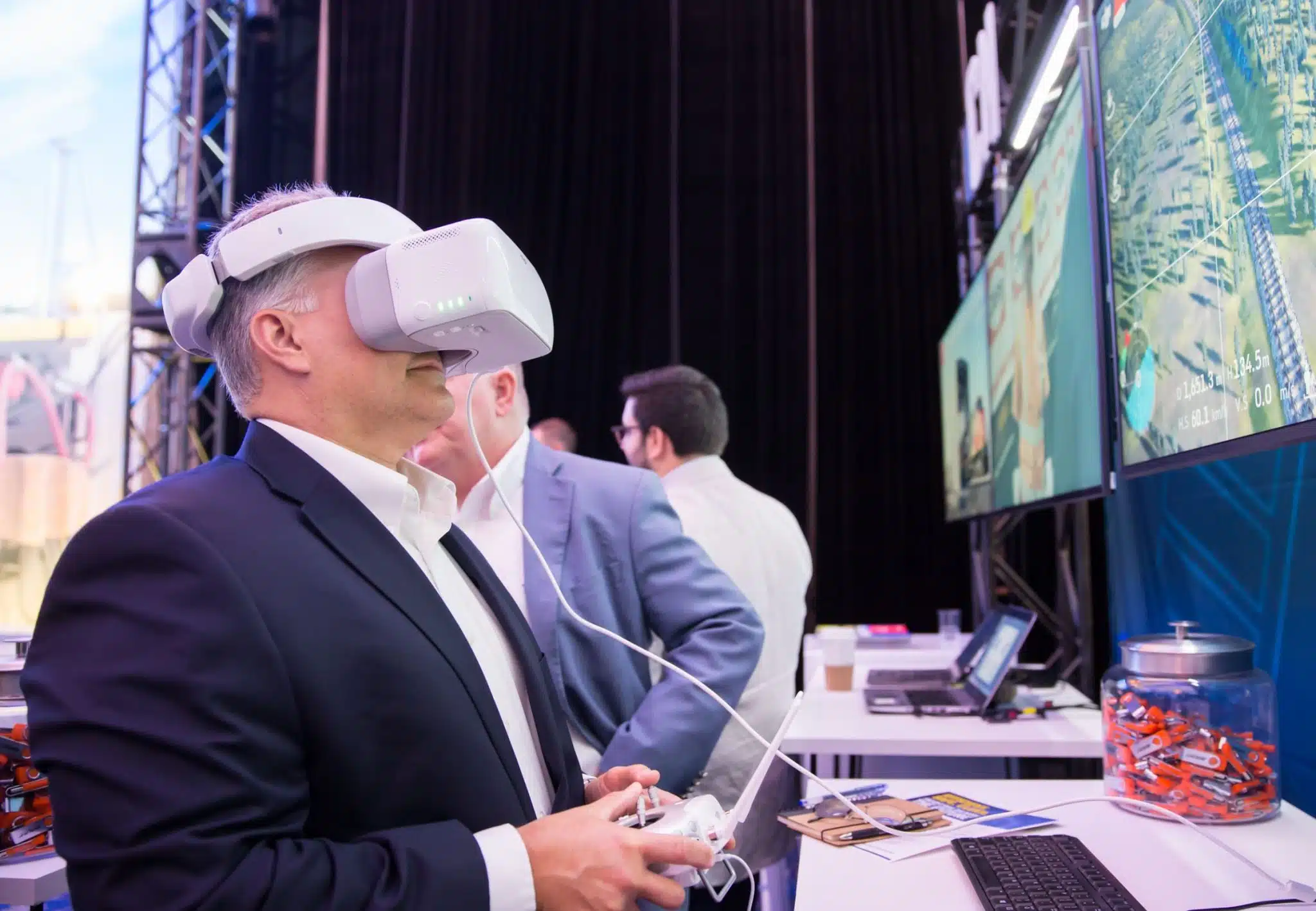AAR’s RailxTech event offers D.C. policymakers and staff a hands-on look at innovations making freight rail safer and more efficient
WASHINGTON, D.C. – May 7, 2019 – The Association of American Railroads (AAR) today hosted its second annual “RailxTech” event on Capitol Hill, bringing together the nation’s Class I railroads to offer policymakers hands-on demonstrations of innovative technologies that are making the industry safer and more efficient than ever before.
“There is no better way for lawmakers and their staff to experience the innovations transforming our nation’s 140,000-mile rail network than by interacting with these technologies firsthand,” said Ian Jefferies, President and CEO of AAR. “America’s freight railroads invest heavily in the infrastructure, equipment and technology necessary for keeping pace with a rapidly evolving transportation sector. We will continue to work with Congress to preserve the policies that will allow railroads to continue making these investments and powering the nation’s economy throughout the 21st century.”
At RailxTech, lawmakers, Congressional staff and other transportation stakeholders met with representatives of the nation’s largest railroad companies to learn more about the implementation and testing of new rail innovations, including Positive Train Control (PTC) safety technology, drones, advanced digital imaging and ultrasonic inspection tools. Technology such as defect detectors, rail welding simulators and virtual inspection simulators showcased the work that is done to keep the tracks, equipment and locomotives running safely and efficiently. Attendees also met with freight rail employees who are developing, implementing and using these technologies every day.
Jefferies noted that the impressive display – which also featured participation from a short line carrier, the Transportation Technology Center (TTCI) and the AskRail mobile app – underscores why the freight rail industry is in the safest era of its nearly 200-year history.
“Railroads are prioritizing investments to address and eliminate the primary causes of accidents – track and equipment issues, as well as human error – knowing they will have a significant impact on the long-term safety of the freight rail network,” said Jefferies. “Through data and a connected network, operators can identify problems before they occur to improve the safety and efficiency of the rail system.”
In addition to hands-on technology demonstrations, attendees had a front row seat to a panel discussion moderated by The Mobility Podcast on the evolution of the transportation sector. Panelists discussed how federal lawmakers can encourage innovation through smart policies and regulations.
Attendees tested their skills on training simulators, high-tech inspection tools and fully immersive virtual reality that put the power of rail technology in their hands.
- AskRail: Participants checked out the AskRail mobile app, which provides more than 25,000 first responders with immediate access to accurate, timely data about what types of hazardous materials a train is carrying so they can make informed decisions about how to respond to a rail emergency.
- BNSF Railway: People tried their hand at BNSF’s drone flight simulator and learned how the company leverages the data collected by drones and artificial intelligence to create an even smarter and safer railroad.
- Canadian National: CN offered an exploration of their new cutting-edge automated inspection technology portals, which use advanced digital imagery and machine learning to inspect trains in real time — as they travel at full speed — and identify rail cars that need repair.
- Canadian Pacific: Specialized sensors beside rail lines and mounted on rail equipment are capturing terabytes of data every year. Attendees learned how CP is applying this data to inform predictive maintenance months — and even years — in advance, enhancing safety and customer service.
- CSX: Participants test drove a locomotive using CSX’s PTC locomotive engineer training simulator and interacted with 3D models of rail facilities generated from drone imagery and LiDAR, a tool that uses lasers to make measurements.
- Genesee & Wyoming: Defects in rail are not always visible to the human eye. G&W offered portable rail defect detector technology to give participants an ultrasonic view inside the rail to discern a healthy rail from one that needs maintenance.
- Kansas City Southern: KCS’s simulator put attendees in the cab of a PTC-equipped locomotive where they experienced how the technology works to stop a train. KCS also showed how the railroad is leveraging PTC data through geospatial mapping technology to enhance rail operations.
- Norfolk Southern: NS highlighted some of the tools they use at their state-of-the-art training facility. Participants developed proper rail welding techniques through virtual reality and performed a virtual inspection of a train’s air brake system using a new tool developed for train conductors and railcar mechanics.
- Transportation Technology Center, Inc. (TTCI): Every day, TTCI — the world’s leading rail research and testing facility — pushes the limits of the rail network and equipment moving across it. They showed their work in action and highlighted how they use dynamic testing and modeling to improve the longevity of bridges, health track and the safety of rail cars.
- Union Pacific: Participants took a virtual ride in a HighRail truck, technology used to inspect railroad tracks to detect flaws and inform maintenance planning. UP also took people inside their computer-based training modules for locomotive engineers, allowing them to operate digital trains using actual locomotive controls.
###
For more information contact: AAR Media Relations at media@aar.org or 202-639-2345.
About AAR: The Association of American Railroads (AAR) is the world’s leading railroad policy, research and technology organization focusing on the safety and productivity of rail carriers. AAR members include the major freight railroads of the U.S., Canada and Mexico, as well as Amtrak. Learn more at www.aar.org.
Follow us on Twitter: @AAR_FreightRail or Facebook: www.facebook.com/freightrail.
